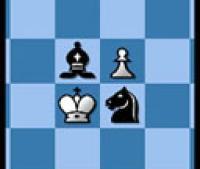
Book Review: Winning Chess Strategies
Following on the heels of Winning Chess Tactics, Winning Chess Strategies is the third book in Grandmaster Yasser Seirawan’s seven book Winning Chess series.
If you are going to play chess, ya gotta have a plan. Some would argue that even a bad plan is better than no plan. At least with a bad plan you have some sort of metric to determine how well (or poorly) things are going, and gives you an opportunity to switch plans if necessary. At the very least, if your plan fails horribly you can vow to never repeat the mistake in future games.
While tactics generally attempt to gain dynamic advantage in a game, Seirawan defines strategies as methods of gaining static advantages. Let’s be a bit more concrete with these notions. Say you manage to castle before your opponents has the opportunity to do the same. You could now claim an advantage over your opponent, but only until he manages to tuck away his own king. So, between the move on which you castle and the move on which your opponents castles, you have a dynamic advantage. On the other hand, setting up a strong pawn structure would be considered a static advantage. Because pawns move slowly and can never move backwards, once the structure is solidified it is unlikely to change in a hurry.
In that light, Seirawan explains much about things like counterplay, correct positioning of the peices and pawns, proper use of material advantage, creating targets and more. I found the chapter on space, “Territorial Domination,” to be particularly enlightening. He adds in a chapter about bad strategy practices in hopes that you will not repeat the mistakes of chess players that have come before you. Not surprisingly, there is a chapter concerned with the great chess strategists of days-gone-by.
“Winning Chess Strategies” is a fair departure from previous books in this series. The discussion tends to be less crystalized than earlier books, and there are very few tests. More annoyingly, even the solutions to the tests struck me as a bit airy-fairy. Initially, I found these issues irritating. However, as I proceeded through the chapters, I realized that the style of the book was induced by the nature of the beast. Tactics can easily be described through very specific patterns, while strategies are not so clear-cut and therefore require more discussion and fewer specifics.
With that in mind, I tried to cut Seirawan a bit of slack when it came to the section on history’s greatest chess strategists. The example games are, to be sure, very interesting, but it was often not at all clear as to what class of strategy they were intended to display. I suspect that a more advanced player than myself will find these games more useful and, most likely, I will gain more insight from them as my own chess-fu increases.
Overall, I’m not quite as stoked about this book as I am with its predecessors. On the other hand, I’m very much looking forward to attacking it for the second time. I learned many useful strategies to consider in my chess games, and I’m quite sure future study with this book will reap many benefits. If, like me, you want to get your foot wet in the waters of positional play, reading this book would be a good strategy.






